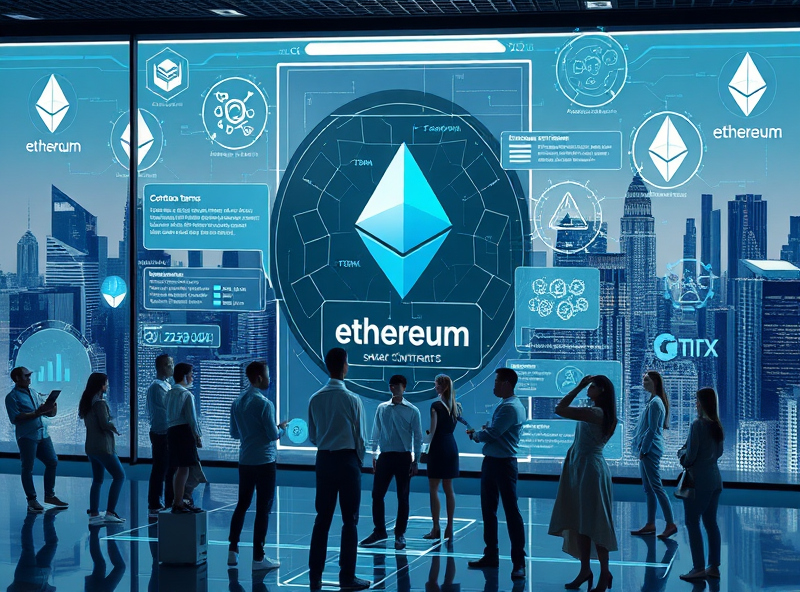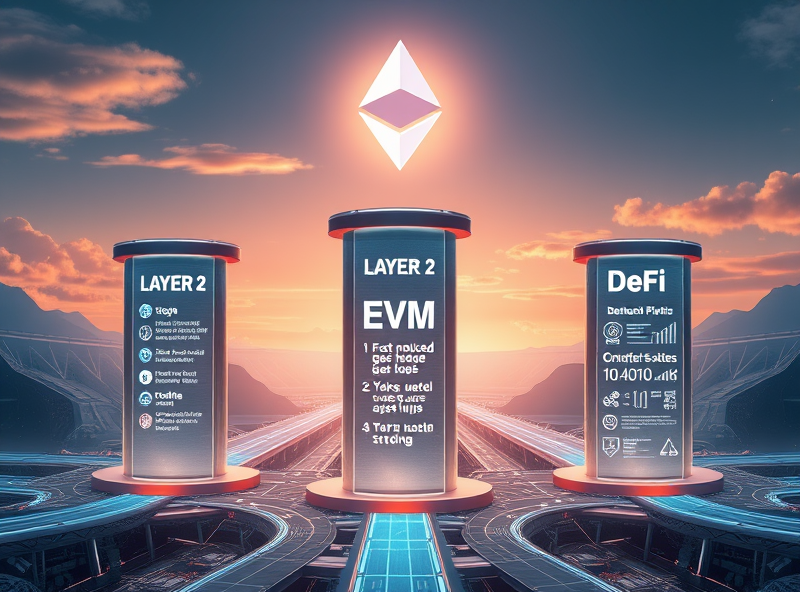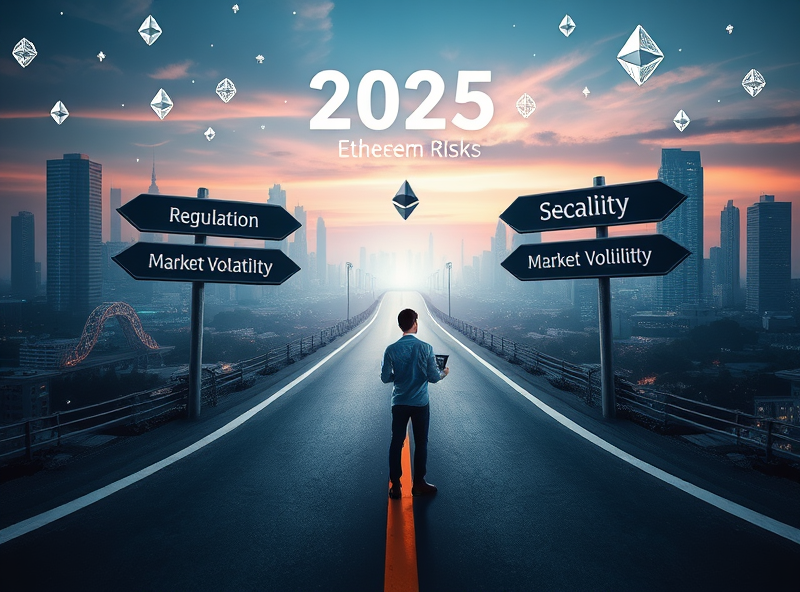이더리움 스마트 계약, 2025년에는 어디까지 발전할까요?

Smart contracts on Ethereum have come a long way since their inception, and by 2025, they are expected to become even more powerful, secure, and user-friendly. One of the most exciting developments is the integration of artificial intelligence (AI) with smart contracts. This means contracts can become more adaptive and responsive, automatically adjusting terms based on real-time data or user behavior. For example, in decentralized finance (DeFi), smart contracts could automatically rebalance investment portfolios or adjust interest rates based on market conditions without human intervention.
In addition, scalability improvements through Ethereum 2.0 and Layer 2 solutions like Optimism and Arbitrum will allow smart contracts to execute faster and at lower costs. This opens the door for broader adoption in industries like real estate, healthcare, and supply chain management. Imagine a world where buying a house, verifying medical records, or tracking goods across borders can be done seamlessly and securely using Ethereum smart contracts.
Moreover, user experience is expected to improve significantly. With better interfaces and more intuitive tools, even non-developers will be able to create and interact with smart contracts. This democratization of blockchain technology can empower individuals and small businesses to automate tasks, reduce reliance on intermediaries, and increase transparency.
In short, by 2025, Ethereum smart contracts will likely be smarter, faster, and more accessible, making them a key tool in the digital transformation of our everyday lives.
성장을 견인하는 핵심 기술들: L2, EVM, DeFi

As we look ahead to Ethereum’s trajectory in 2025, it’s clear that several core technologies are playing a pivotal role in its continued growth and adoption. Let’s explore three of the most impactful: Layer 2 (L2) scaling solutions, the Ethereum Virtual Machine (EVM), and Decentralized Finance (DeFi).
Layer 2 solutions are essential for Ethereum’s scalability. With the increasing number of users and decentralized applications (dApps), Ethereum’s mainnet often faces congestion and high gas fees. L2 technologies like Optimistic Rollups and zk-Rollups help process transactions off-chain while maintaining the security of the main Ethereum network. This means faster, cheaper transactions — a game-changer for both developers and users.
The Ethereum Virtual Machine (EVM) is the heart of Ethereum’s smart contract functionality. It allows developers to write and deploy decentralized applications using Solidity, Ethereum’s programming language. In 2025, we’re seeing a rise in EVM-compatible chains, which means developers can build across multiple blockchains with minimal code changes. This interoperability boosts innovation and reduces entry barriers for new projects.
DeFi, or Decentralized Finance, continues to revolutionize how we interact with money. From lending and borrowing platforms to decentralized exchanges and yield farming, DeFi protocols are providing financial services without intermediaries. In 2025, we expect DeFi to become more user-friendly, secure, and integrated with traditional finance, making it a viable option for mainstream users.
Together, L2, EVM, and DeFi are not just technical upgrades — they are the foundation of Ethereum’s mission to build a more open, accessible, and efficient financial system. Understanding these technologies can help investors and users make informed decisions and stay ahead in the evolving crypto landscape.
투자자라면 꼭 알아야 할 단기·장기 전략

Hello, dear readers! 😊 As we step into 2025, Ethereum continues to be one of the most talked-about assets in the crypto world. Whether you’re a seasoned investor or just starting out, understanding both short-term and long-term strategies is key to making informed decisions. Let’s explore how you can navigate Ethereum investment wisely this year.
🔹 Short-Term Strategies (0–6 months):
Short-term investing in Ethereum is often driven by market trends, news, and technical analysis. If you’re aiming for quick gains, here are a few tips:
1. Stay Updated: Follow Ethereum-related news, especially around upgrades like Ethereum 2.0 and regulatory developments.
2. Use Technical Analysis: Tools like RSI, MACD, and candlestick patterns can help you identify entry and exit points.
3. Set Stop-Loss Orders: To manage risk, always set a stop-loss to protect your capital from sudden price drops.
4. Monitor Gas Fees: High gas fees can eat into your profits. Timing your transactions during low network congestion can save costs.
🔹 Long-Term Strategies (6 months to several years):
Long-term Ethereum investment is about believing in the project’s future potential. Here’s how to approach it:
1. Understand the Fundamentals: Ethereum is more than a cryptocurrency—it’s a platform for decentralized applications (dApps) and smart contracts. Its growing ecosystem supports its long-term value.
2. Dollar-Cost Averaging (DCA): Instead of investing a lump sum, invest a fixed amount regularly. This reduces the impact of market volatility.
3. Staking ETH: With Ethereum’s transition to Proof of Stake, staking your ETH can earn you passive income while supporting the network.
4. Secure Storage: Use hardware wallets or reputable cold storage solutions to keep your ETH safe from hacks.
✨ Bonus Tip: Diversify your portfolio. While Ethereum is a strong asset, combining it with other cryptos or traditional investments can balance your risk.
In conclusion, 2025 offers exciting opportunities for Ethereum investors. By aligning your strategy with your financial goals and risk tolerance, you can make smarter, more confident decisions. Happy investing, and remember—knowledge is your best asset! 💡
2025년 주요 리스크와 현명한 대응 방안

As we look ahead to Ethereum in 2025, it’s important to be aware of the potential risks that could impact your investment decisions. One of the major risks is regulatory uncertainty. Governments around the world are still shaping their stance on cryptocurrencies, and sudden changes in regulations could lead to market volatility. To mitigate this, it’s wise to stay informed about policy developments in key regions like the U.S., EU, and Asia, and diversify your portfolio to reduce exposure to any single jurisdiction.
Another key risk is scalability and network congestion. While Ethereum 2.0 aims to address these issues, delays in implementation or unforeseen technical challenges could affect transaction speeds and fees. Investors should monitor the progress of Ethereum upgrades and consider Layer 2 solutions or alternative blockchains as part of a balanced strategy.
Security threats, such as smart contract vulnerabilities and phishing attacks, also remain a concern. Using reputable wallets, enabling two-factor authentication, and only interacting with verified smart contracts can help protect your assets.
Lastly, market sentiment and macroeconomic factors like inflation, interest rates, and geopolitical tensions can influence Ethereum’s price. Keeping a long-term perspective, setting clear investment goals, and not reacting emotionally to short-term price swings are essential habits for success.
By understanding these risks and preparing accordingly, you can navigate the Ethereum landscape in 2025 with greater confidence and resilience.





Leave a Reply